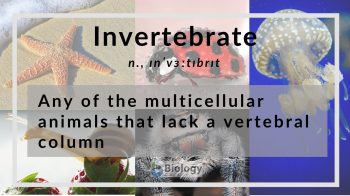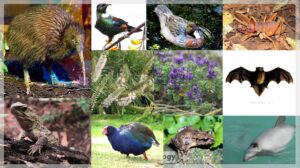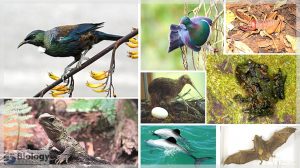
Invertebrate
n., ɪnˈvɜːtɪbrɪt
Any of the multicellular animals that lack a vertebral column
Table of Contents
Invertebrate Definition
An invertebrate refers to any of the animals lacking a vertebral column. The term invertebrate came from the Latin in-, meaning “not” and vertebrate defined as an animal with vertebrae. Hence, invertebrates are a group of animals that do not have vertebrae (also called a spine or a backbone).
Characteristics of Invertebrates
Invertebrates belong to the animal kingdom. In fact, most animals in the kingdom Animalia are invertebrates. Only one phylum (i.e. the phylum Chordata) of the approximate 35 phyla is composed of animals with backbones (they are called vertebrates). (Ref. 1) Nevertheless, both invertebrates and vertebrates share these general characteristics: they lack a cell wall, they are heterotrophic, and most of them exhibit symmetry. They are also multicellular. This means that they are made up of many cells. However, the cells of vertebrates are organized into more elaborate and distinct biological systems. Invertebrates do not have systems that are as elaborate as those in the vertebrates. In fact, some invertebrates, like sponges, do not even have true tissues and organs. What separates the vertebrates from the invertebrates is the vertebral column. Vertebrates have a spine that develops from the notochord during the embryonic phase. The invertebrates do not have such a structure.
Examples of Invertebrates
Some of the major groups of invertebrates are as follows: (Ref. 1)
• Porifera (sponges) – characterized by their lack of true tissues and organs.
• Cnidaria (sea anemones, jellyfish, corals, and box jellies) – exhibit two morphological body plans, i.e. polyp or medusa. They have specialized cells called cnidocytes that contain nematocysts used for immobilizing prey. Most of them are marine species.
• Platyhelminthes (flatworms) – invertebrates that are acoelomates, and lacking complex circulatory and respiratory systems. Some groups reproduce asexually.
• Nematoda (roundworms) – invertebrates with cylindrical bodies. Many of them are parasites.
• Annelida (segmented worms) – invertebrates that have a segmented body plan
• Arthropoda (insects, spiders, crabs, etc.) – invertebrates with a hard external exoskeleton that is periodically shed and replaced. They have jointed legs. They are the largest animal phylum.
• Mollusca (cuttlefish, snails, mussels, etc.) – invertebrates with a muscular foot that they use for anchorage. They also have a mantle.
• Echinodermata (starfish, sea cucumbers, etc.) – invertebrates with “spiny” skin.
References
- What is an Invertebrate? | manoa.hawaii.edu/ExploringOurFluidEarth. (2020). Hawaii.Edu. https://manoa.hawaii.edu/exploringourfluidearth/biological/invertebrates/what-invertebrate
- Discover Invertebrates. (2017, April 20). Florida Museum. https://www.floridamuseum.ufl.edu/iz/discover-invertebrates/
©BiologyOnline. Content provided and moderated by BiologyOnline Editors.


